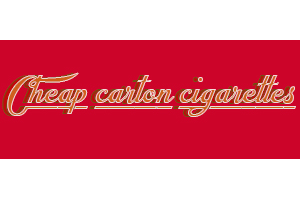How is tobacco processed?

How is Tobacco Processed?
How is tobacco processed? Firstly That’s a good question. After harvesting tobacco leaves, they must go through extensive processing to be turned into products like cigarettes, dip, and cigars. First, the leaves must be cured, which is the drying process. Interestingly, the curing method used can give the plant different characteristics and qualities.
Curing Methods
Flue-Curing:
Secondly, Flue-curing is the most popular curing method for Virginia tobacco. It involves hanging the tobacco leaves in curing barns and using hot air to dry them out. As a result, the leaves take on unique colors, flavors, and aromas.
Air-Curing:
Finally, Air-curing is similar to flue-curing, but the leaves are left to hang in a well-ventilated curing barn and dry naturally. Typically, this process takes anywhere from four to eight weeks and is commonly used on Burley tobacco.
Sun-Curing:
Lastly Alternatively, tobacco leaves can be sun-cured, meaning they are left to hang in a sunny area to dry for around two weeks.
Fermentation
In addition, Following curing, the next steps in the production process vary, depending on the tobacco product being made. For cigars, the tobacco leaves are fermented. During this phase, the leaves become riper, and the nicotine content lessens. In fact, many air-cured tobaccos are fermented to help darken their aromas and develop rich flavors.
Final Processing and Blending
Moreover, tobacco is cured and fermented, it can be turned into various products such as cigarettes, cigars, snuff, dip, and more. Often, different types of tobacco are blended to create well-balanced, flavorful products. This gives a brief overview of the topic: how is tobacco processed?
Types of Tobacco Products and How Their Tobaccos Are Processed
Also, There are a huge variety of different methods used to enjoy tobacco. Some involve smoking, while others involve consuming or snorting it. Ultimately, the method you choose depends on factors like how much nicotine you want and how discreet your consumption needs to be. So really, how is tobacco processed and what are the ways it’s consumed? Here are a few:
A. Bidis
Furthermore, Bidis are small, thin, hand-rolled cigarettes popular in India and Southeast Asia. They consist of tobacco wrapped in a tendu or temburni leaf and are often secured with colorful string. Additionally, flavors such as chocolate, cherry, and mango are commonly added.
B. Cigarettes
Fourthly, Cigarettes are small, cylindrical chambers containing finely cut or reconstituted tobacco rolled in thin paper. They usually have a filter and may include additives like menthol. Importantly, they remain the predominant form of tobacco use worldwide.
Popular brands include:
- Natural American Spirit – all-natural, mellow flavor
- Marlboro Gold – smooth, airy, light
- Camel Blue – spicy and full-flavored
- Newport Menthol 100’s – strong menthol without overpowering tobacco taste
C. Cigars and Cigarillos
Most cigars use air-cured or dried tobacco, aged and fermented over months.
- Cigars, by comparison, are larger than cigarettes and unfiltered.
- Cigarillos, on the other hand, are smaller, may be filtered, and are often flavored.
Popular brands include: Backwoods, Montecristo, Cohiba, and Middleton’s Black & Mild.
D. Dissolvable Tobacco
Although, Dissolvable tobacco is designed to dissolve in the mouth. It comes as strips, sticks, orbs, and lozenges. Unlike traditional tobacco, these products are smoke-free, spit-free, and often resemble mints or candy.
E. Electronic Cigarettes
Also, E-cigarettes are battery-powered devices that vaporize a nicotine solution. Although they are not technically tobacco products, their nicotine is still derived from tobacco.
Popular models include:
- Juul
- Hyppe Bar
- Blu Disposable
Note: Most flavored varieties are now banned in the U.S.
F. Hookah
Hookah is a water pipe used to smoke Shisha, a flavored tobacco mixture. Common flavors include mint, apple, chocolate, and coconut. Today, it’s often used socially in hookah bars where the pipe is passed around.
G. Kreteks
Finally, Kreteks, or clove cigarettes, are imported from Indonesia and contain a mix of tobacco and cloves. They are typically unfiltered and deliver higher nicotine. Notably, one brand of kretek may contain over 30 varieties of tobacco.
H. Pipes
Firstly, Pipes are traditional tools for smoking tobacco. They have a bowl for the tobacco, a stem, and a mouthpiece. Historically, pipe smoking is one of the oldest forms of tobacco use and is still enjoyed today, especially by collectors and connoisseurs.
I. Smokeless Tobacco Smokeless tobacco doesn’t involve burning. It’s placed in the mouth or snorted. Generally, these products fall into two categories:
Chewing Tobacco
Thirdly, Chewing tobacco is cured and comes in loose-leaf, plug, or twist form. It’s placed between the cheek and gum or lip and chewed. As chewing releases nicotine, users often spit out excess juice.
Snuff
Also, There are two main varieties:
- Dry Snuff – finely powdered tobacco that is sniffed through the nose.
- Moist Snuff (Dipping Tobacco) – moistened and finely ground; it’s placed between the lip and gum.
Furthermore, snuff is typically flavored. Common flavors include mint, coffee, chocolate, and cinnamon.
